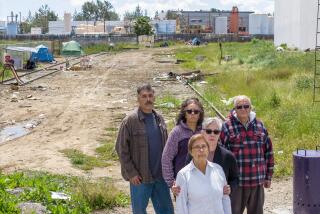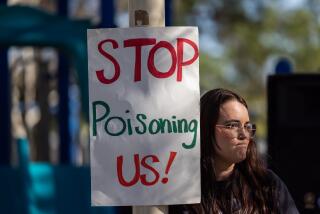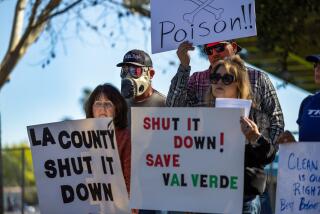Readers React: Safety concerns about San Onofre’s waste storage

To the editor: Steve Chapple penned an excellent wake-up call regarding the decommissioned San Onofre nuclear power plant.
Many believe the best way to solve the NIMBY problem of nuclear waste is to require each state to handle its own. Environmentalists (myself included) must at times be pragmatic and accept the lesser of two evils.
Rather than storing the radioactive waste close to population areas and the Pacific, we should bury it deep within a Yucca Mountain-like depository in Camp Pendleton’s remote northern region. If the federal government blocks this, we could consider using a remote mountain in the Lagunas, the San Jacintos, or the Sierra, or a non-irrigated, non-inhabited region of the Mojave or Sonoran deserts. If the storage is deep enough and seismic considerations are met, the environmental and security costs — though still problematic — would be much less than the very real current risk of contaminating our oceans and endangering the immense human population of coastal Southern California.
Glenn Vanstrum, La Jolla
..
To the editor: The writer points out the glaring weaknesses of Southern California Edison’s plan to store nuclear waste, which includes possible catastrophe for California. Let’s contact scientists who are tops in the field and find out the best thing to do.
Finding solutions to scientific problems is for scientists, not laymen.
Chet Chebegia, San Marcos
..
To the editor: The writer is correct, but he fails to mention some relevant information. I lived in Southern California for most of my life and studied geology. That area, like Japan, has an active fault zone that stretches from San Diego, past Newport Beach, and up into Northridge. Further, there is a multiple-fault-zone area just off the coast and not far from the cliffs near San Onofre. It is a question of when, not if.
Amy Davis, Denver
..
To the editor: The author confuses a sea level rise over the next few decades of 1.8 cm/decade with the tens of feet that would be required to even begin to create a problem.
He implies that the 9/11 pilots could have destroyed the casks storing the spent fuel instead of the World Trade Venter. He should have checked out the Youtube video showing tests of casks that were being rammed by an 80+ mph train. Though very very hard on the train, little damage was done to the containers.
He makes an inappropriate analogy between the fresh fuel rods stored in a cooling water pool in Fukushima to the long decayed spent fuel rods at San Onofre. The latter generate little heat and don’t require cooling. They are being removed from the cooling pools and put into casks because these rods have decayed sufficiently that their temperatures do not approach the levels at which the zirconium could burn even with lots of oxygen.
Dallas Weaver, Huntington Beach
Follow the Opinion section on Twitter @latimesopinion and Facebook
More to Read
A cure for the common opinion
Get thought-provoking perspectives with our weekly newsletter.
You may occasionally receive promotional content from the Los Angeles Times.






